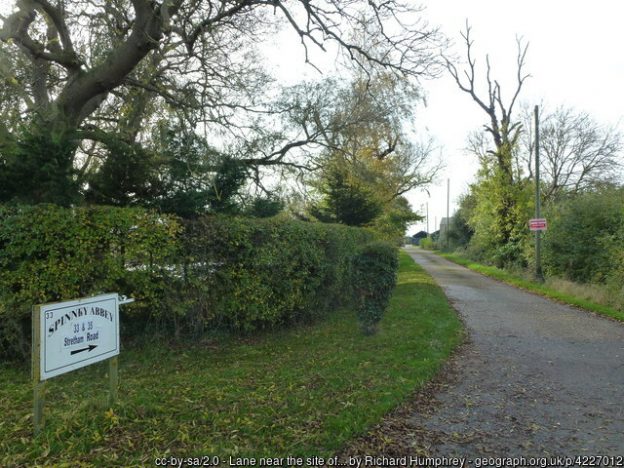A ‘query petty treason’ case today – while I am most interested in the ‘husband killed by wife’ cases, it is worth remembering that the Statute of Treasons 1352 gives other examples of ‘sort of treason because against the natural hierarchical order of things’ cases. I do have some ‘servant kills master/mistress’ cases on my ‘table of doom’, but there is much less available in the other category – killings of abbots by their monks. Here, though, on two Cambridgeshire gaol delivery rolls,[i] is a case from 1403 which is, if not quite ‘monk on abbot’, tantalisingly adjacent to that. Having been very pleased with myself for finding it, I discovered that those hard-working early 20th C local historians had been there before me: there is a one-page account of the documents (complete with old style roll numbering) in The East Anglian vol. 13.[ii] Slightly miffed for a moment, but then, actually, I quite like making this sort of connection. Maybe one day somebody will do the same with this post … (delusions of being Emily Dickinson, or something, there …).
Anyway, on with the story. The deceased in this case was William Gilbert, priory of a rather small foundation in Cambridgeshire (I confess I had never heard of it) called Spinney. A bit of basic research reveals that this was a house of Augustinian canons, and, at the relevant time, had only a handful of residents.
The inquest before a coroner was held ‘ on 19th May, 1403. The story noted down from the twelve inquest jurors[iii] was that three canons of Spinney (also said to be confratres – ‘brothers’ of the deceased), John Lode alias John Catesson, Thomas Smyth, and William Hall, had killed him that same day (note speedy start to proceedings!). The killing, as described, was fairly drawn out. John Lode stabbed William Gilbert under the left arm, Thomas Smyth stabbed him in the back. William Gilbert then managed to get away into a different room, but the trio broke the door, and Thomas stabbed William Gilbert through his left arm, and his side, to his heart. It is carefully specified that each of the first two stab wounds would have sufficed to kill WG, had there not been another one.[iv] The geographical as well as physical locations are specified – the initial stabbing was said to have taken place in the priory church, and the final wound, in the priory’s hall, to which William Gilbert had fled in his failed escape bid.
The three were found guilty by a jury, at the gaol delivery session on 20th July 1403, but escaped execution because they were able to take advantage of benefit of clergy, and were ‘claimed’ by the ecclesiastical authorities.
Petty treason: teasing out the definitional implications
What does all this tell us about petty treason? The account does use the language of treachery or treason – the trio had risen up like traitors, but note that the bond highlighted is not that between the killers and their prior, but between the killers and the king (tanquam proditores domini regis manu forte proditorie). If they were really seen as traitors against the king, it seems surprising that they were allowed benefit of clergy. What am I missing? And does this case show that canon-prior just was not seen as analogous to monk-abbot in this context? The reference to ‘fellow brethren’, as Palmer translates it, suggests a less ‘vertical’ relationship, doesn’t it?
Canon to the right of him, canon to the left of him … thoughts on the social implications
Assuming this is anywhere near true, it does make life at the priory of Spinney sound rather grim – a conspiracy against its leader involving what was probably the bulk of the others in the house. Note, though that one person did rather nicely out of it all – the sub-prior, who escaped indictment, and stepped fairly seamlessly into the top job once the dust settled …
GS
22/8/2021
[i] JUST 3/8/6 m.58 (AALT IMG 106); JUST 3/190 m. 5 (AALT IMG 13).
[ii] W.M. Palmer, ‘Murder of the Prior of Spinney’, p. 104.
[iii] (who, I note, included a certain ‘Willamm Schakespeare’ … there you have it – evidence that W. S. was actually a member of the Undead …).
[iv] I am by no means an expert, but that third wound, right through an arm and side, into the heart, sounds as if it would have had to be particularly forceful. I also note that William Hall is not reported to have struck a blow at all. But then accessory liability – or treating as principals all with any sort of participation in the killing – was certainly ‘a thing’ in these cases.
Image: where the priory would have been if it was still there, but it isn’t. All sorts of symbolic ..
